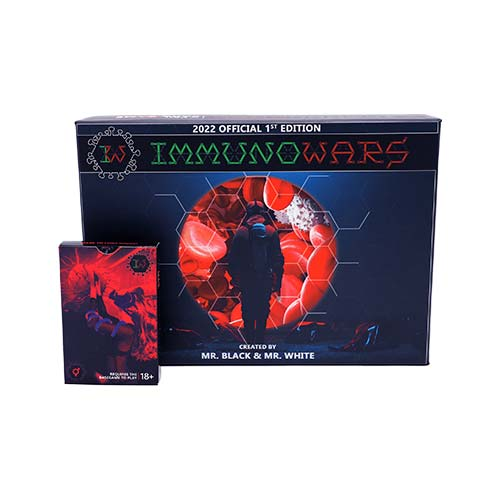Author: Liliana Sánchez Rocha
Read time: 5 minutes
What could be so horrible about Tetanus, you ask? Let’s imagine one day you start feeling a bit off, maybe a fever at first. Then, gradually your jaw starts spasming, your neck and shoulders stiffen, and bit by bit, you lose control of your body. While gasping for air, you experience excruciating muscle contractions that contort your back in the most unnatural and painful ways. The contractions fracture your spine and tear your muscles, yet through it all, you have a grim smile, forced by the spasms in your jaw. But what’s the culprit behind this nightmarish scenario?

What is tetanus and what causes it?
The culprit behind the symptoms above is a bacteria called Clostridium tetani (C. tetani). Historical records of this infectious disease date back to 1500 BC in Ancient Egypt, and by 400 BC, the famous Hippocrates pioneered treatments that might raise a few eyebrows today! Patients were prescribed to get hammered on wine before wrapping them in oil-soaked clothes. Why? Do you wonder? It was believed that this curious practice would make patients sweat out the disease. Spoiler alert: it didn’t work! On the other hand, this “therapy” sounds more fun than Renaissance-style treatments, where you would be covered in poop and other decomposed organic matter (manure). Basically, you would be thrown straight into the compost, perhaps as a pre-burial method masquerade as “treatment” Wink, wink.
Clostridium tetani’s secret power
Interestingly C. tetani can’t survive around oxygen, yes! The oxygen that we need to live is lethal for some bacterium known as “anaerobic”. Thus, in order for C. tetani to survive, thrive, and multiply, it has evolved a clever strategy in which it transforms its cylindrical body into a type of armor that shields it from the danger outside, this structure is called “spore”. The spores of C. tetani are virtually indestructible, they are resistant to boiling, freezing, and chemicals. On top of that, they can survive for years, patiently awaiting the perfect moment to “come back to life”. These spores can be found E-V-E-R-Y-W-H-E-R-E, mainly in soil but also in the poop of various animals, perhaps in that of your lovely pet? When the spore encounters a suitable place to colonize, let’s say a wound where tissue has already died (anaerobic environment), it reverts to the bacteria stage, multiplies, and produces its secret weapon, two powerful toxins; tetanolysin and tetanospasmin. Tetanospasmin is one of the most potent toxins in the world, it could take just 0.0002 mg (2.5 nanograms/kg) to kill an 80kg person, to put some context, according to the United States Drug Enforcement Administration (DEA) a lethal dose of fentanyl is around 2mg, 10 thousand times less powerful than tetanospasmin. Thus, tetanus is no joke, not even Mr. White could save you!
Contrary to popular belief, it is not the rust in objects that predisposes us to catch tetanus, but any simple cut on your finger could be enough to let C. tetani in and unleash its power. After an incubation of 2 to 21 days, tetanospasmin embarks on a journey through the bloodstream where it is taken up by nerve cells. This results in the blockage of critical nerve signals (neurotransmitters) that regulate muscle movement, promoting uncontrollable spasms and nerve system damage.
Tetanus prevention and control as a tactic of war
Did you know that battlefields were breeding grounds for tetanus? Soldiers who survived explosions and serious wounds often faced a final battle with C. tetani. The contact of deep wounds with dirt was a lethal mix, just during the American Civil War it was recorded that those who contracted tetanus had an 89% mortality rate. Thus, finding a treatment and prevention became a military tactic. After much experimentation on the battlefield, a treatment to eliminate the toxin was developed (antitoxin), followed by the tetanus-toxoid-containing vaccine (TTCV) in 1924. As a special characteristic of TTCV, this vaccine “trains” the body to produce antibodies against the toxin rather than to the bacteria itself. Together, the antitoxin and vaccination were a game-changer during World War I (WWI) where tetanus cases dropped dramatically from 9 to 1.4 per 1000 injured (84%) and the mortality rate decreased from 89% to virtually zero! This incredible outcome led to the public release of the tetanus vaccine in 1938, giving us the superpower to defeat one of the most potent toxins in the world.
What are the odds of getting tetanus?
The odds of suffering a tetanus infection today in developed countries are really slim. Thanks to vaccination global deaths due to C. tetani have declined an astonishing 95% from 1980 to 2022. Most of the cases happening nowadays occur in countries without widespread tetanus vaccination plans, lack of efficient treatments, and no proper wound care. But don’t be mistaken, C. tetani will never be eradicated (since it lives everywhere!), The only way to avoid the eerie grim grins is to stay fully vaccinated and get boosters every 10 years to maintain immunity. Now, you are the only one who can answer this question; are you still in danger?
Playing C. tetani in the ImmunoWars field

You can “Lockjaw” your opponent in the ImmunoWars limited Bismuth Edition, as part of the Back From the Dead infections. For just 1 ATP you will bring C. tetani back to life. At first glands this card seems as harmless as a kitten in a lab coat, it is cheap, has zero contagiousness, one severity, and lasts just one turn. But don’t be fooled! In the hands of a ruthless strategist, it might give you some unexpected jaw spasms. This is an excellent card to use in combination with other contagious diseases. Play it first to avoid any chance of self-infection and watch your opponent choose between losing 2 HP or risk losing 4 HP. Are they gamblers?
But beware, savvy players can counterattack easily. Any antibiotic will put C. tetani back in its grave, as well as members of the immune system such as monocytes, lysosomes, B-cells, or Natural Killer cells, they will handle the job with deadly efficiency.
Do you want to provoke grim grins on your friends? Get ImmunoWars here
References:
Kaufmann SH. Remembering Emil von Behring: from Tetanus Treatment to Antibody Cooperation with Phagocytes. mBio. 2017 Feb 28;8(1):e00117-17. doi: 10.1128/mBio.00117-17. PMID: 28246359; PMCID: PMC5347343.
Norris S. Medicine and Disease in History: Tetanus – Journeys into the Past [Internet]. 2019. Available from: https://sites.miamioh.edu/hst-journeys/2019/05/medicine-and-disease-in-history-tetanus/
Disease factsheet about tetanus [Internet]. European Centre for Disease Prevention and Control. 2023. Available from: https://www.ecdc.europa.eu/en/tetanus/facts
Belan, M. (2023, February 28). Ranked: Biotoxins in Nature, by lethal dose. Visual Capitalist. https://www.visualcapitalist.com/visually-ranking-biotoxins-in-nature/
Facts about Fentanyl [Internet]. DEA. Available from: https://www.dea.gov/resources/facts-about-fentanyl
Behrens H, Ochmann S, Dadonaite B, Roser M. Tetanus [Internet]. Our World in Data. 2024. Available from: https://ourworldindata.org/tetanus
Page not found | CDC [Internet]. 2024. Available from: https://www.cdc.gov/vaccines/pubs/pinkbook/tetanus.html


